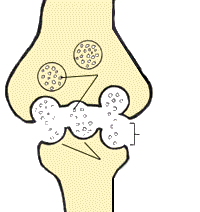
Elsewhere, I discussed
inert-gas therapy, an alternative-healing modality that builds up
regeneration potential by electromagnetically stimulating various inert
gases, especially xenon. Although that discussion was couched in
esoteric-healing principles that fall outside the realm of mainstream
science, research is now emerging documenting xenon’s neuroprotective
properties.
REVIEW
In brief review, the inert gases (helium, neon,
argon, krypton, and xenon) are a unique elemental family. Helium is the
lightest with a molecular weight of four, and xenon is the heaviest with
a molecular weight of 131. All are present in the air we breathe,
ranging from the relatively abundant argon to scarce xenon (1 part per
11.5 million).
Compared to other elements, inert gases possess
additional energy that keeps them in a gaseous state. Although higher
molecular-weight elements tend to be liquids or solids, xenon, heavier
than many metals, exists as a gas. The energy that keeps it in this
gaseous state is that which is putatively tapped into for the
regenerative properties discussed in part 1.
NEUROPROTECTION
Intriguing scientific studies are emerging
documenting xenon’s neuroprotective potential. Although these studies do
not specifically electromagnetically stimulate xenon, the Earth’s
background magnetic field or the fields generated by many laboratory
devices may provide some physiologically significant stimulation,
especially given the high experimental concentrations of xenon.
Although clinical use has been limited due to cost,
xenon has been employed as an anesthetic for over 50 years. Evidence
indicates that xenon slows down neural transmission through blocking
NMDA (N-methyl-d-aspartate) receptors on neurons, which regulate
conduction-promoting flow of ions in and out of the cell.
Basically, neurons communicate with each other
through neurotransmitters, including the amino acid glutamate. Nerve
impulses trigger glutamate release from pre-synaptic neurons (synapses
are junctions through which neurons signal to each other). The released
glutamate binds to NMDA receptors on nearby post-synaptic cells,
promulgating the nerve impulse. Because glutamate promotes conduction,
it is called an excitatory amino acid.

Xenon inhibits this conduction-promoting process.
For example, scientists have shown that high xenon concentrations reduce
NMDA-associated conduction by about 60%. Simplistically, view the xenon
gas as coating the cell, making it difficult for neurotransmitters to
interact with nearby cells.
Although glutamate and its post-synaptic NMDA
receptor are normal components of nervous-system conduction,
over-activation can mediate damage after SCI and other nervous-system
insults (e.g., head injury, stroke, etc). Basically, injured neurons
burst, releasing glutamate in toxic concentrations. Through interactions
with neighboring NMDA receptors, excessive glutamate initiates a
neurotoxic, biochemical cascade damaging nearby neurons and axons.
Using various models of neurological injury,
Drs. Nicholas Franks, Mervyn Maze and colleagues (UK and other
countries) have shown xenon exerts a neuroprotective effect by
preventing excess glutamate from interacting with its NMDA receptor.
For example, in one study, the investigators
injected a damage-triggering excitatory amino acid into rats and
measured the amount of injury it created in a brain region called the
hypothalamus. Xenon at 75% concentration greatly lessened injury.
In a 2008 study, the researchers studied the
effects of xenon and helium (a more prevalent inert gas) in a different
model of traumatic brain injury. Specifically, cultured brain slices
from mice pups were subjected to a focused mechanical trauma, and then
cell injury monitored in the presence and absence of inert gases. The
investigators concluded “the inert gases helium and xenon are
surprisingly effective as neuroprotectants in an in vitro model
of traumatic brain injury… For xenon (at 75% atm), total injury was
reduced by a factor of two while secondary injury was reduced by more
that a factor of four.”
Although we need to be careful extrapolating
experimental results in animals to real-world clinical settings, the
researchers believe their findings can eventually lead “to treatments
for people suffering from nerve damaging illnesses, such as strokes, and
brain and spinal cord injuries.”
In press statements, they note: “We hope xenon
could be developed as a novel treatment. It is naturally occurring. And
more importantly, its known lack of toxicity makes it an attractive
candidate as a neuroprotectant in humans.”
“Ultimately, we hope xenon could become part of
standard medical treatment, with paramedics being able to administer it
… to stop ongoing nerve cell death.”
CONCLUSION
Based on years of researching both mainstream and
alternative therapies, my gut feeling is that inert gases, especially
xenon, will eventually play a huge therapeutic role in minimizing damage
after neurological injury. I believe the aforementioned studies are
merely the tip of the iceberg on what is to come.
Adapted from article appearing in February 2009 Paraplegia News (For subscriptions,
call 602-224-0500) or go to
www.pn-magazine.com.
TOP